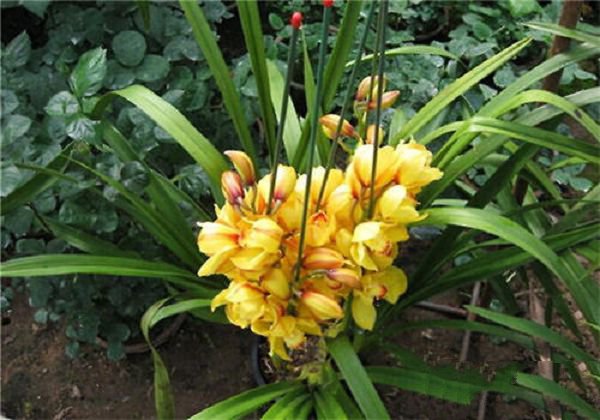Key Points of Rhododendron Flower Cultivation
Flower rhododendron is one of the top ten traditional flowers in China, which is rich in shape, beautiful in color and beautiful. However, rhododendron has higher requirements for growth environment. If it is not managed properly, its growth and flowering will be affected, and even wither and die. Therefore, when cultivating cuckoos, we should pay attention to the following six key points.
First, soil. Rhododendron flowers like loose, strong ventilation, good drainage, pH between 4.5 and 5.5, rich in humus acid soil. Can use rotten leaf soil, pine needle soil, peat soil or mature sawdust, avoid alkaline soil, clayey soil.
Second, temperature. Flower cuckoos like warm and cool climate, and most cuckoos have a certain degree of cold resistance. Its optimum growth temperature is 12 ℃ ~ 25 ℃. It grows slowly or semi-dormant when the temperature exceeds 30 ℃, enters dormancy when the temperature is lower than 5 ℃, and frost injury occurs when the temperature is lower than-3 ℃.
Third, moisture. Flower rhododendron has shallow and developed roots, is very sensitive to water, and is afraid of drought as well as waterlogging. It is generally required that the soil water holding capacity is not less than 18%, but if there is stagnant water in the growing area, the roots will rot and die. Generally speaking, watering should be decided according to the season, weather conditions, plant size, dry and wet soil, and the stage of growth and development.
Rhododendron flowers grow slowly and require less water in winter, so watering should be reduced appropriately; when the temperature rises in spring, rhododendron blossoms and shoots, the water demand increases; in summer high temperature season, it should be irrigated along with the dry, spraying water on the ground and leaves at noon and evening to cool and humidify; when the weather turns cool in autumn, watering should be reduced. From the point of view of growth and development, more water is required in the vegetative growth stage, and it is not suitable to water more in the flower bud formation stage and after the flower bud formation.
Neutral or slightly acidic Rain Water, river and pond water are the best for watering. If tap water is used, it is best to store it in a tank for 1-2 days and wait for chlorine to volatilize before use. Long-term watering reduces soil acidity, so 0.2% ferrous sulfate can be added once a week to ensure that the soil is acidic.
Fourth, fertilizing. Rhododendron flowers like fertilizer, but it is necessary to master the principle of applying thin fertilizer frequently. Rhododendron root system is thin and dense, the ability to absorb fertilizer is poor, do not apply thick fertilizer or raw fertilizer.
It is appropriate to irrigate with 1% imported compound fertilizer solution. The specific fertilization methods are as follows: after flowering, rhododendron flowers should be applied nitrogen-based fertilizer 2 times, once every 10 days, in order to promote the growth of branches and leaves. The critical period for cuckoo budding is after August. Fertilizers mainly composed of phosphorus and the combination of nitrogen and phosphorus should be applied twice a month for three times, and no fertilizer should be applied during the winter dormant period.
Before flowering in the following year, the thin fertilizer mainly composed of phosphorus and the combination of nitrogen and phosphorus was applied twice, so that the flowers were big and colorful when they flowered. At this time, the concentration of fertilizer should be low, and too strong will cause the buds to scorch and fail to bloom.
Fifth, light. Rhododendron flowers are semi-shady plants, avoid direct sunlight and dry muggy heat, so maintenance should be placed in a semi-shady ventilated place. During the period from Qingming Festival to Frosts Descent, 75% shade should be given to prevent the sunburn of new shoots from causing white flowers on the leaf surface.
6. Pruning. Rhododendron plants are low, strong sprouting, dense overlapping branches, not conducive to ventilation and light, so attention should be paid to pruning. The pruning time should be after blooming in spring and in autumn and winter. Timely erase adventitious buds and remove too many buds. After flowering, the residual flowers should be picked in time, diseased branches and growing branches should be trimmed to improve the ventilation and light transmission conditions.
Related
- What if the leaves of potted flowers turn yellow?
- Florescence Control of several Flowers
- Anti-freezing technology and post-freezing nursing technology of flowers
- What is the classification of flowers? What are the common methods of flower classification?
- Prevention and control of alkali and acid damage of flowers in courtyard
- Technology of Anti-freezing and restoring growth of Flower seedlings in greenhouse and greenhouse
- How does flower fertilization not hurt the root? Fertilization technology of flowers
- Key points of disinfection in flower greenhouse
- Several pesticides that are banned or used cautiously in flowers
- How to fertilize the flowers that watch the leaves?



